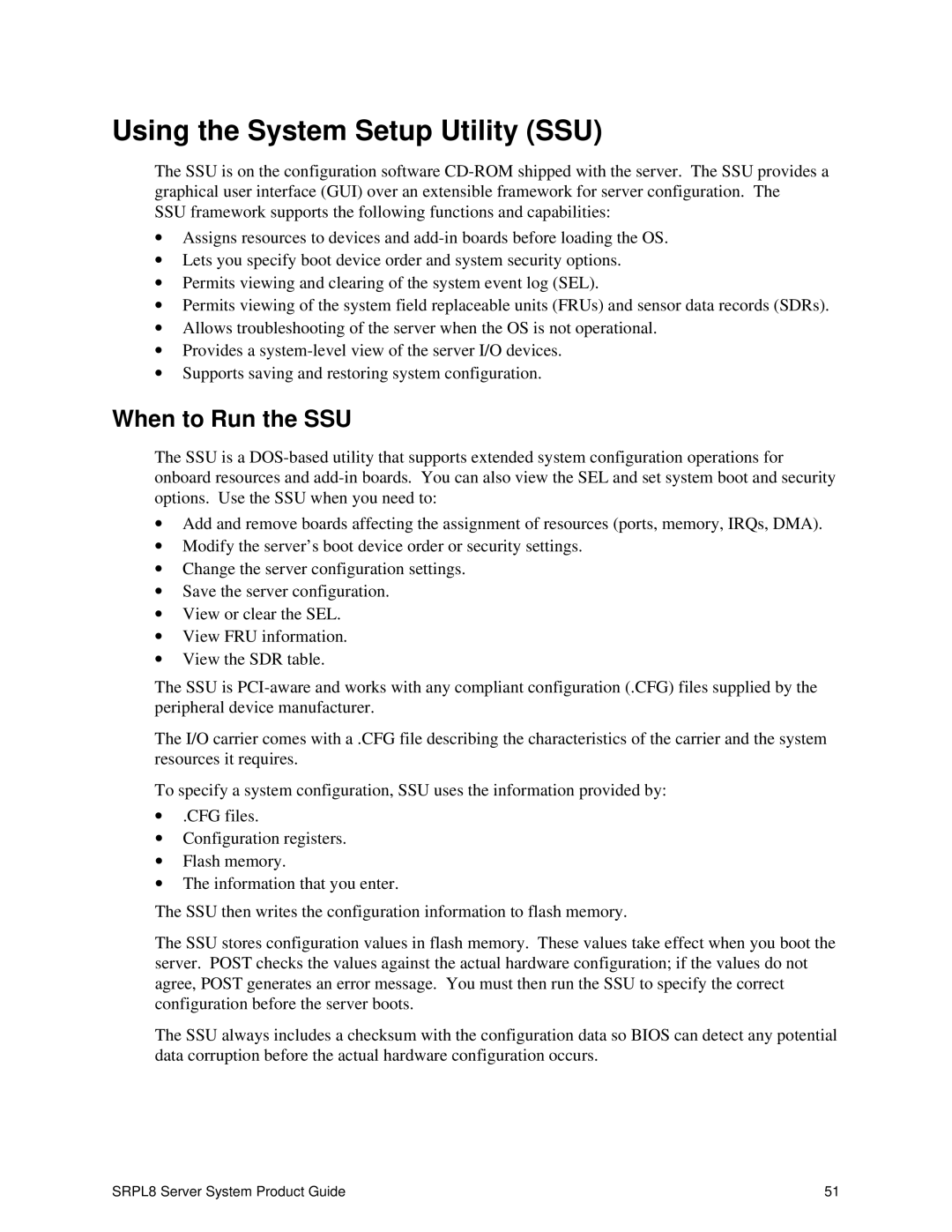Using the System Setup Utility (SSU)
The SSU is on the configuration software
SSU framework supports the following functions and capabilities:
∙Assigns resources to devices and
∙Lets you specify boot device order and system security options.
∙Permits viewing and clearing of the system event log (SEL).
∙Permits viewing of the system field replaceable units (FRUs) and sensor data records (SDRs).
∙Allows troubleshooting of the server when the OS is not operational.
∙Provides a
∙Supports saving and restoring system configuration.
When to Run the SSU
The SSU is a
∙Add and remove boards affecting the assignment of resources (ports, memory, IRQs, DMA).
∙Modify the server’s boot device order or security settings.
∙Change the server configuration settings.
∙Save the server configuration.
∙View or clear the SEL.
∙View FRU information.
∙View the SDR table.
The SSU is
The I/O carrier comes with a .CFG file describing the characteristics of the carrier and the system resources it requires.
To specify a system configuration, SSU uses the information provided by:
∙.CFG files.
∙Configuration registers.
∙Flash memory.
∙The information that you enter.
The SSU then writes the configuration information to flash memory.
The SSU stores configuration values in flash memory. These values take effect when you boot the server. POST checks the values against the actual hardware configuration; if the values do not agree, POST generates an error message. You must then run the SSU to specify the correct configuration before the server boots.
The SSU always includes a checksum with the configuration data so BIOS can detect any potential data corruption before the actual hardware configuration occurs.
SRPL8 Server System Product Guide | 51 |
